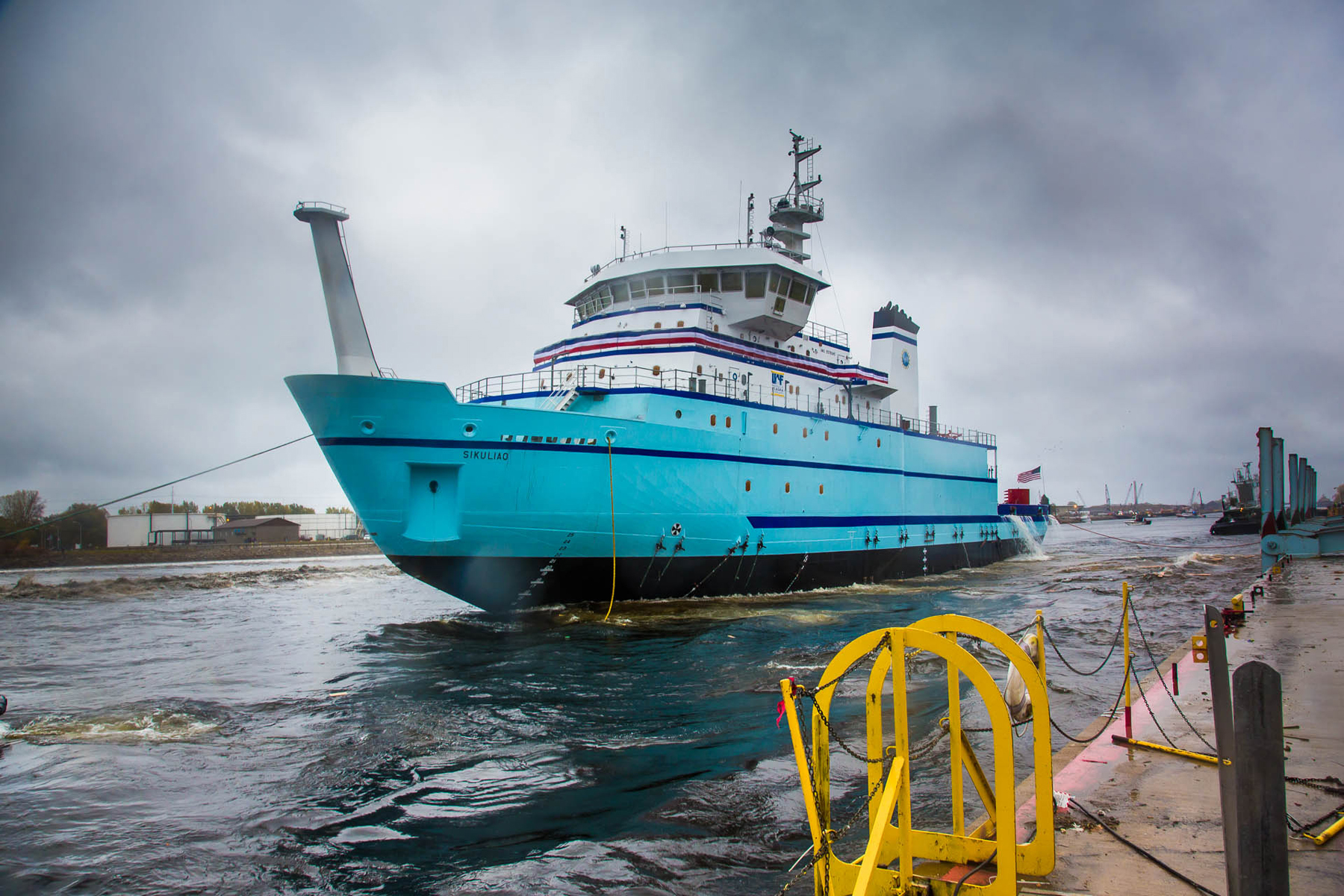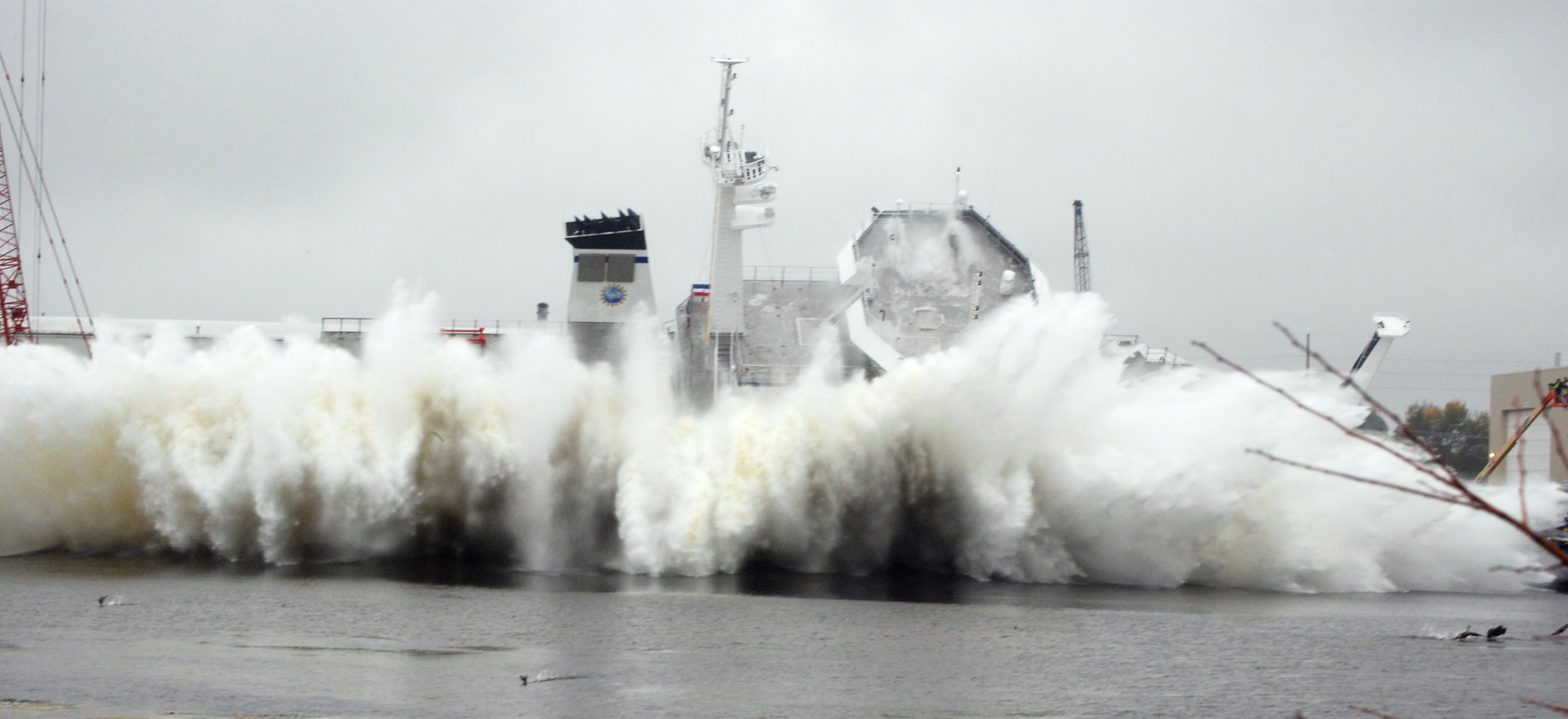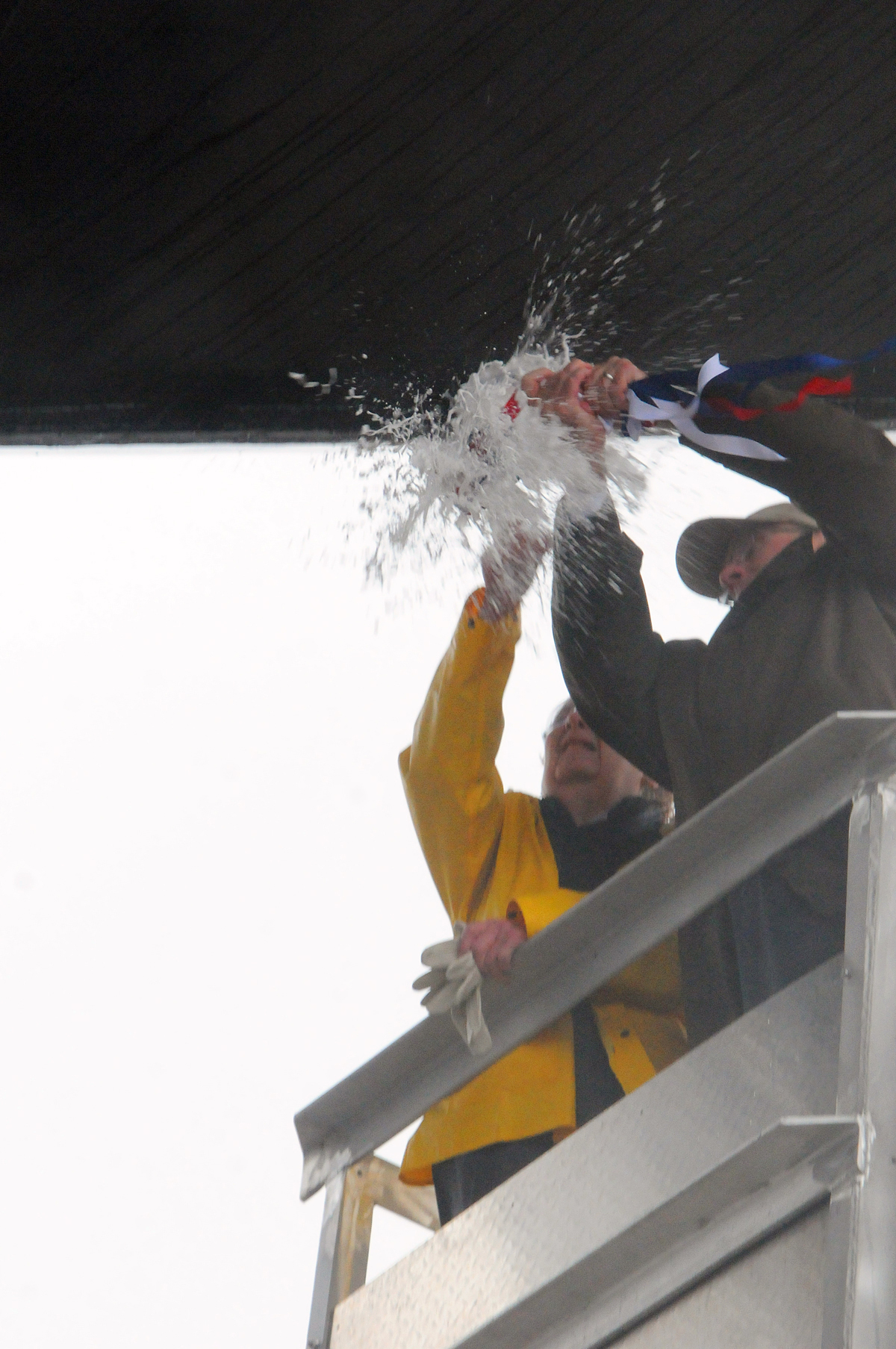Hundreds help launch R/V Sikuliaq in Wisconsin
October 13, 2012

Sharice Walker
907-474-7208, 907-590-1175
10/13/12
Marinette, Wis.— The R/V Sikuliaq is one big splash closer to arriving in Alaska.
Hundreds of people endured wind and rain Saturday morning to attend the christening and launch ceremony for the 261-foot vessel, the first built for the National Science Foundation in more than three decades. The crowd stood back and cheered as the Sikuliaq slid into the Menomonee River, sending an impressive spray of water over the dock.
The R/V Sikuliaq, pronounced “see-KOO-lee-ack,” is owned by the National Science Foundation and will be operated by the University of Alaska Fairbanks School of Fisheries and Ocean Sciences. The ship was designed by Seattle-based Glosten Associates and is being built by Marinette Marine Corporation. Construction work will continue throughout the winter. UAF is slated to take control of the ship next summer and it is expected to arrive in its homeport of Seward, Alaska by January 2014.
“R/V Sikuliaq is one of the most advanced research vessels in the world,” said NSF director Subra Suresh. “Its capabilities to operate in extreme ecosystems will serve the science and engineering research communities for decades to come, while providing opportunities for educators and students to learn first-hand about the Arctic environment.”

Construction of the nearly $200 million vessel was funded primarily through the American Recovery and Reinvestment Act. The Sikuliaq is the first research vessel built for the NSF since 1981 and will be the only ship in the national academic fleet rated for year-round operations in first-year ice. The vessel’s name, Sikuliaq, is an Inupiaq word meaning “young sea ice.” The name was chosen to reflect both the university’s focus on arctic research and Alaska heritage.
The Sikuliaq is uniquely equipped for operating in ice-choked waters. Its reinforced double hull, two rotating thrusters and scalloped propeller blades will enable it to break through ice up to 2.5 feet thick. The ship will also be outfitted with the latest technology for oceanographic research, including advanced navigation systems, acoustic mapping systems and sensors, and systems for deploying a wide array of science equipment into and out of the water. The Sikuliaq will primarily support oceanographic research in polar and sub-polar regions of the world.

"It's a wonderful platform for doing oceanographic and fisheries-related research in the Arctic, in the Bering Sea and in areas we have not been able to go or have only been able to go at really great expense," said UAF Chancellor Brian Rogers. “It certainly will grow UAF, but, more importantly, it will grow the knowledge of the Arctic. That's what really important about this. It's not just about us; it's about the future of arctic science."
Two UAF emeriti served as co-sponsors for the Sikuliaq: Vera Alexander, dean emerita of the School of Fisheries and Ocean Sciences, and Robert Elsner, professor emeritus. Both scientists have spent decades lobbying for a research vessel designed for science operations in the Arctic. Alexander christened the ship and Elsner initiated the side-launch of the 261-foot vessel into the Menominee River.
About the National Science Foundation
The National Science Foundation is an independent federal agency that supports fundamental research and education across all fields of science and engineering. In fiscal year 2012, its budget is $7.0 billion. NSF funds reach all 50 states through grants to nearly 2,000 colleges, universities and other institutions. Each year, NSF receives over 50,000 competitive requests for funding, and makes about 11,000 new funding awards. NSF also awards nearly $420 million in professional and service contracts yearly.
About University of Alaska Fairbanks School of Fisheries and Ocean Sciences
The UAF School of Fisheries and Ocean Sciences conducts world-class marine and fisheries research, education and outreach across Alaska, the Arctic and Antarctic. More than 60 faculty scientists serve the state of Alaska from facilities located in Anchorage, Fairbanks, Juneau, Kodiak and Seward.
ADDITIONAL CONTACTS: Marmian Grimes, UAF public information officer, at 907-474-7902, 907-460-750 or marmian.grimes@alaska.edu.
ON THE WEB:
http://www.sfos.uaf.edu/sikuliaq/home-index.html
http://www.glosten.com/
http://www.marinettemarine.com/
http://www.nsf.gov/news/news_summ.jsp?cntn_id=125707&org=NSF&from=news
NOTE TO EDITORS: Multimedia content, including photos and video clips, is available for download from the FTP site at ftp://69.64.191.19. Contact Walker or Grimes for username and password.
SW/10-13-12-11/099-13


